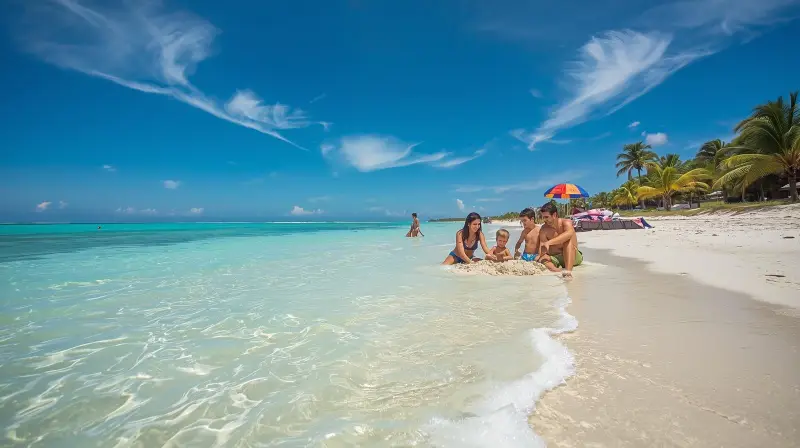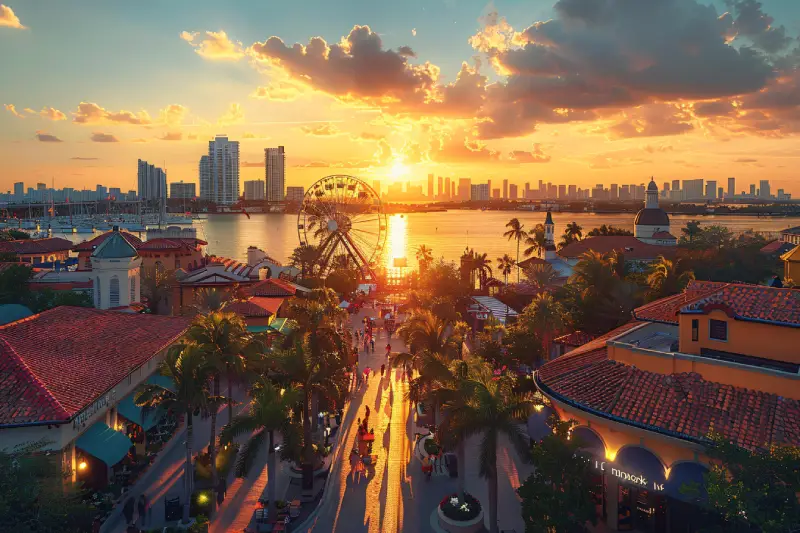What is the Difference Between a Hotel and a Motel?
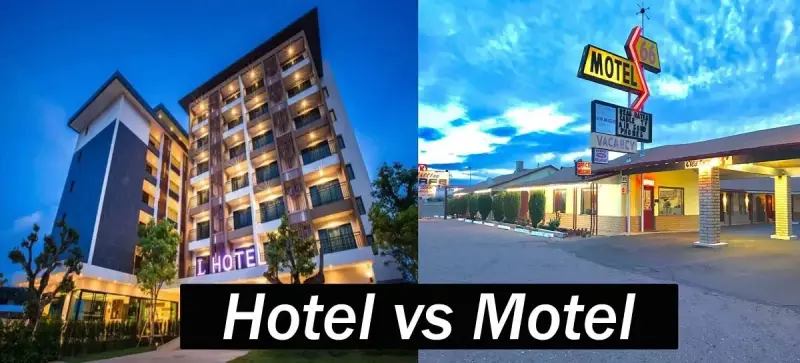
Table of Contents
ToggleWhen planning a trip, one of the first things you’ll need to decide is where to stay. Hotels and motels are both popular options, but they offer different experiences. Hotels usually have many amenities, like restaurants, gyms, and spas, and are often located in city centers or near tourist spots. Motels are simpler, usually located by highways, and provide basic services for short stays.
While hotels are great for longer stays or those looking for extra services, motels are perfect for quick, budget-friendly stops. Motels became popular in the 1920s with the rise of car travel and are still a go-to for road trips today. Understanding the differences can help you make the right choice for your needs.
This article will help you understand the key distinctions between hotels and motels so that you can make the best choice for your trip.
What is a Hotel?
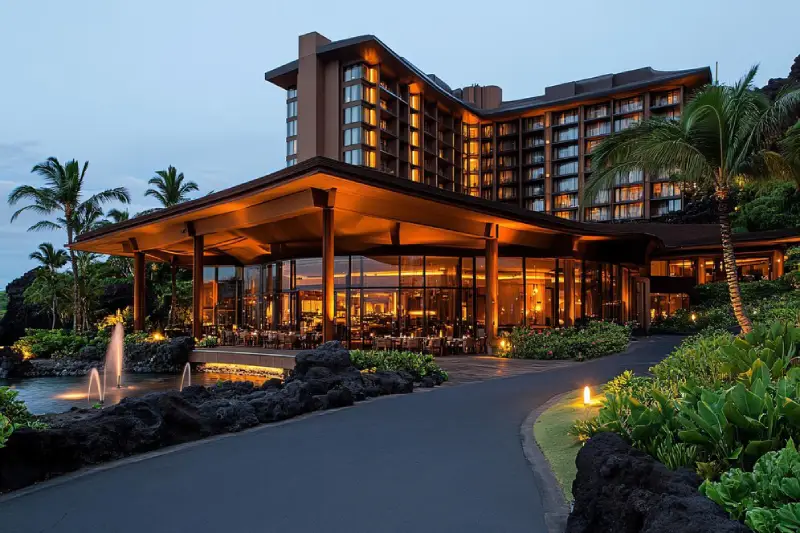
A hotel is a business that provides tourists and visitors with food, housing, and other services.
Designed for comfort and convenience, hotels cater to diverse needs, from short-term stays to extended visits. They often feature a wide array of amenities, such as:
Key features of a hotel:
- Rooms: These can vary from basic to luxurious, with features like air conditioning, Wi-Fi, TVs, and private bathrooms.
- Dining: Many hotels have on-site restaurants or cafes.
- Recreational Facilities: These may include swimming pools, fitness centers, spas, and business centers.
- Concierge Services: Front desk staff can assist with bookings, reservations, and local recommendations.
Hotels are commonly located in urban centers, tourist destinations, airports, or business districts, making them ideal for tourists, families, and professionals.
What is a Motel?
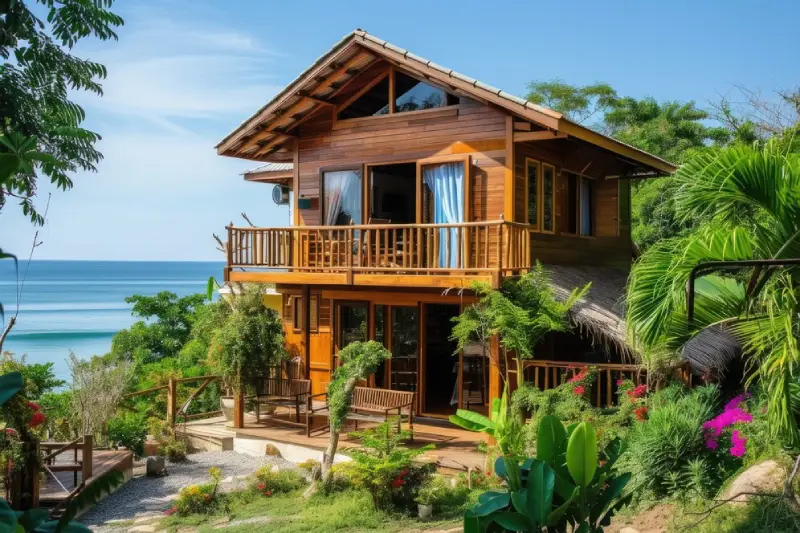
A motel (short for “motor hotel”) is an accommodation designed primarily for motorists. It offers basic lodging with direct access to parking spaces.
Motels are typically single—or two-story structures along highways or suburban areas, making them convenient for road trippers and travelers seeking short-term stays.
Key features of motels include:
- Exterior Corridors: Rooms are accessed directly from the parking lot, making it convenient for travelers arriving by car.
- Fewer Amenities: Motels often offer fewer amenities than hotels, such as limited dining options and fewer recreational facilities.
- Short-Term Stays: Motels are primarily designed for short-term stays, such as overnight accommodations for road trips.
- Cost-Effective: Focused on affordability, often without additional services like room service or in-house dining.
Motels cater to budget-conscious travelers seeking a convenient resting place during long journeys.
Differences Between Hotels and Motels
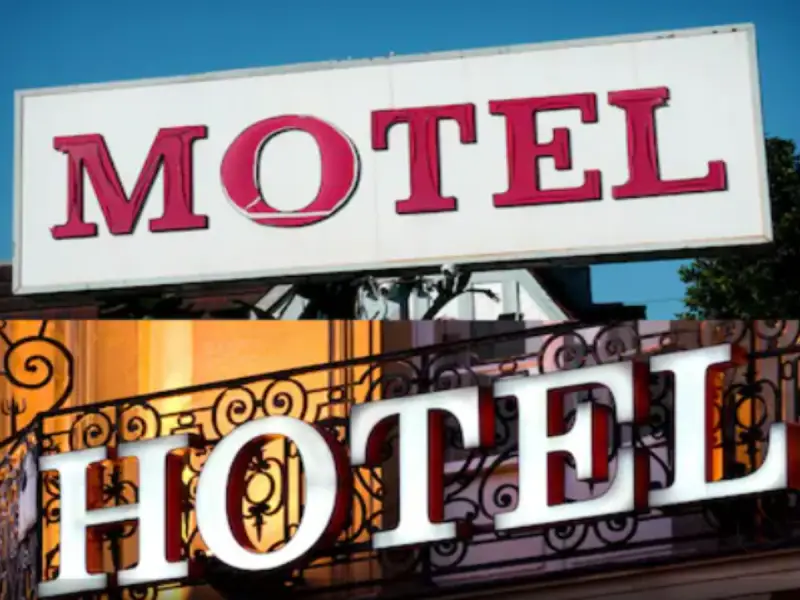
Hotels and motels serve the same fundamental purpose: providing a place to stay for travelers. However, they cater to different audiences and offer distinct experiences based on their design, location, amenities, and services.
Let’s explore the key differences between hotels and motels in detail.
1. Origins and Historical Development
The history of hotels and motels dates back to the early days of modern travel. Each serves a different purpose.
- Hotels: The word “hotel” originated in France during the 18th century and was used to describe a large establishment offering various services to travelers, including food, lodging, and often entertainment.
Historically, hotels were established in cities catering to wealthy travelers or business people.
Over time, hotels evolved from simple inns to large, complex buildings with multiple floors, extensive amenities, and premium services.
- Motels: The term “motel” is a blend of “motor” and “hotel,” indicating its original purpose: providing accommodations for motorists. The first motels emerged in the 1920s in the United States as the automobile industry boomed.
Unlike traditional hotels, usually located in city centers, motels were built along highways and designed with parking directly in front of rooms for easy access.
They aimed to serve the increasing number of road travelers who needed a convenient place to rest overnight.
2. Location and Accessibility
One of the most noticeable differences between hotels and motels is their location and accessibility.
- Hotels: Typically located in city centers, tourist areas, or near airports, hotels are designed to cater to a vast range of travelers, including tourists, business travelers, and event-goers.
The main goal is to offer a convenient location close to restaurants, retail establishments, public transportation, and local attractions.
- Motels: Motels are usually found along highways or in suburban areas, away from city centers. They cater primarily to travelers on long road trips, offering a convenient stopping point for motorists.
Motels are often located in less bustling areas, making them less likely to have the proximity to attractions or public transportation that hotels offer.
3. Structure and Design
Hotels and motels are designed with different features, significantly impacting a guest’s experience.
- Hotels: Hotels tend to be large, multi-story buildings with an internal design focused on comfort and luxury. The architecture often includes elaborate lobbies, elevators, long corridors, and rooms located on upper floors.
Hotels typically offer a more formalized layout, with rooms accessed via internal hallways or common areas.
Larger hotels may feature amenities like pools, spas, fitness centers, conference rooms, and business centers.
- Motels: Motels are usually smaller, single-story buildings with rooms accessed directly from the parking lot.
The design is much simpler and functional. Each room has outdoor entrances, making it easy for guests to park directly in front of their door.
Most motels have limited floors and focus on providing basic amenities for a short stay rather than a luxury experience.
4. Services and Amenities
The range of services and amenities hotels and motels provide is a major differentiating factor.
- Hotels: Hotels are known for offering various services and amenities tailored to guests’ needs. Common features of hotels include:
- 24/7 front desk service and concierge assistance.
- On-site dining options include restaurants, bars, and cafes.
- Room service, laundry services, and cleaning services.
- Fitness centers, swimming pools, spas, and wellness facilities.
- Conference rooms and event facilities for business meetings, weddings, and other events.
- Premium amenities like high-quality toiletries, linens, and room upgrades.
- Hotels may also offer loyalty programs, rewards, or special packages that provide guests with perks and additional services.
- Motels: Motels typically offer a more basic set of amenities, focusing on convenience for short-term stays rather than luxury.
While some motels have a small reception area, many lack amenities like restaurants, pools, or fitness centers. Standard services typically include:
- Essential cleaning services (though not as extensive as those in hotels).
- Free parking with direct access to rooms.
- Basic Wi-Fi and television in rooms.
- Vending machines or small snack areas for quick refreshments.
- Motels generally provide fewer frills, focusing on providing a place to sleep and little else.
5. Pricing and Target Audience
Pricing is often a major factor in the decision-making process when choosing between a hotel and a motel.
- Hotels: Due to their larger size, prime locations, and extensive amenities, hotels are more expensive than motels. The price range varies depending on the type of hotel, location, and services offered.
Luxury or five-star resorts can be significantly more expensive than budget hotels, but even mid-range hotels can charge a premium for their comfort and services.
Hotels are aimed at a broad range of customers, including tourists, business travelers, families, and individuals attending events or conferences.
Hotels are typically the choice of people looking for high-end experiences, such as fine dining, spas, and upscale room designs.
- Motels: Motels are generally far more affordable than hotels, with prices often lower due to their more basic offerings and less luxurious settings.
This price difference makes motels popular for road travelers, budget-conscious visitors, and those needing a short-term or overnight stay.
The target audience for motels is typically travelers on long road trips, those needing a place to rest, or individuals on a tight budget who do not need extra services or amenities.
6. Length of Stay
Another key distinction between hotels and motels is the typical length of stay.
- Hotels: Hotels cater to both short-term and extended stays. Many hotel chains offer options for guests needing accommodations for a few days or weeks.
Long-term guests may benefit from discounted rates, larger rooms, and access to additional services such as kitchens or laundry facilities.
- Motels: Motels are generally geared toward short-term stays, often one or two nights, making them ideal for road-trippers or travelers passing through.
While some motels may accommodate longer stays, they are rarely designed for extended visits, and the atmosphere is typically less conducive to longer-term living.
7. Privacy and Security
Security and privacy can vary significantly between hotels and motels.
- Hotels: Hotels generally have more security measures in place to ensure the safety and privacy of guests.
This includes security staff, surveillance cameras, electronic keycard access to rooms, and restricted access to certain areas like pools or gyms.
Hotels’ interior hallways are typically closed off from the outside, adding an additional layer of privacy and security.
- Motels: While motels may have basic security features such as locked doors and front desk assistance, they typically lack the extensive security measures in hotels.
Motels’ exterior-facing rooms and direct access to parking areas can make guests feel less secure, as they are often more accessible to the general public.
8. Popularity and Trends
Various factors, including travel trends, industry shifts, and consumer preferences, can influence the popularity of hotels and motels.
- Hotels: With the growing trend of luxury travel, business tourism, and event hosting, hotels remain popular in urban areas, tourist destinations, and commercial hubs.
Hotels also benefit from being part of well-known chains, providing consistency, and offering rewards programs.
- Motels: Motels are popular among budget-conscious travelers, especially those taking road trips or traveling for short stays.
Recently, many motels have renovated their facilities and added more amenities to attract customers seeking affordable and convenient accommodation options.
Here’s a comparison chart summarizing the key differences between hotels and motels:

between hotels and motels:
| Feature | Hotels | Motels |
| Definition | A large establishment providing accommodations and various amenities. | A smaller, budget-friendly accommodation for road travelers. |
| Origin | Originated in the 18th century, primarily for wealthy travelers. | Created in the 1920s for road travelers. |
| Purpose | Catering to business travelers, tourists, and long-term stays. | Catering mainly to road-trippers and short-term stays. |
| Location | Typically found in city centers, tourist spots, or near airports. | Usually located along highways or suburban areas. |
| Design & Layout | Multi-story buildings with internal corridors and elevators. | Single-story buildings with rooms accessed from the parking lot. |
| Amenities | Full-service options like restaurants, bars, pools, spas, and business centers. | Basic amenities like free parking, vending machines, and limited Wi-Fi. |
| Services | 24/7 concierge, room service, cleaning, laundry, fitness centers. | Limited services, often no concierge or room service. |
| Price | Typically, it is more expensive due to premium services, location, and amenities. | Generally more affordable with basic accommodations. |
| Target Audience | Tourists, business travelers, event-goers, families. | Road travelers, budget-conscious visitors, short stays. |
| Length of Stay | Suitable for both short-term and extended stays. | Primarily for short-term stays (1–2 nights). |
| Security | Higher security with keycards, surveillance, and staff presence. | Lower security, rooms open to the parking lot, and fewer staff on hand. |
| Privacy | More private with rooms inside the building, often with restricted access to certain areas. | Less private rooms are directly accessible from the parking lot. |
| Room Access | Rooms are accessed through internal hallways. | Rooms are accessed directly from the outside. |
| Room Features | Larger rooms with higher-end furnishings and more amenities. | Smaller rooms with basic furnishings. |
| Customer Type | Business professionals, vacationers, conference attendees, luxury travelers. | Budget travelers, road trippers, and overnight guests. |
| Parking | Valet or parking garages are often available. | Free parking directly outside rooms. |
| Privacy | Rooms are typically located in internal hallways or floors. | Rooms open directly to the parking lot. |
How to Choose Between a Hotel and a Motel
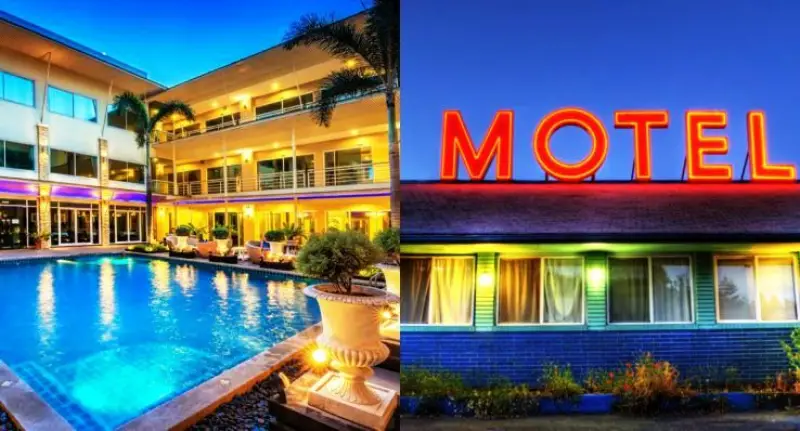
One of the first decisions when planning a trip is where to stay. Hotels and motels offer different experiences, and learning the differences can help you choose the right one.
1. Consider the Purpose of Your Trip
- Hotels: These are best for vacations or business trips where extra services like room service, gyms, or conference rooms are needed.
- Motels: Perfect for short stays or traveling on a budget. They’re great for quick stops during road trips.
2. Evaluate Your Budget
- Hotels: Usually more expensive because they offer more services and amenities.
- Motels: More affordable, with basic rooms and fewer amenities.
3. Check the Location
- Hotels: These are found in city centers, near airports, or tourist spots, making them convenient for sightseeing or business.
- Motels: Located along highways, ideal for travelers needing a quick stop or passing through.
4. Think About the Length of Your Stay
- Hotels: Better for longer stays with additional features like suites, laundry, and restaurants.
- Motels: Best for one or two-night stays. They don’t offer services for long-term visits.
5. Determine the Importance of Amenities
- Hotels: Offer free Wi-Fi, pools, gyms, and room service.
- Motels: They offer basic amenities, usually a bed, bathroom, and TV. Some may offer complimentary breakfast or parking.
6. Consider Security and Privacy
- Hotels: Often have security like keycard access and staff on site.
- Motels: Less secure, with rooms that open directly to the outside. Privacy can be limited.
7. Assess the Quality of the Room and the Overall Experience
- Hotels: Generally offer high-quality, comfortable rooms with better furnishings.
- Motels: Rooms are basic but functional. Some motels may have updated rooms with better comfort.
8. Check for Reviews and Ratings
- Hotels: You can find reviews on sites like TripAdvisor, which tell you about amenities, cleanliness, and service.
- Motels: Reviews will help you understand the quality and comfort of the motel.
9. Consider Special Features for Business Travelers
- Hotels: Great for business travelers with features like meeting rooms, high-speed internet, and workspaces.
- Motels: Usually don’t have business services like meeting rooms.
10. Look at Booking Flexibility
- Hotels: Often offer flexible booking and cancellation policies, plus rewards for frequent guests.
- Motels: They can be more flexible with booking but may not have as many options for cancellations or rewards.
Wrapping It Up
Choosing between a hotel and a motel depends on your needs and preferences. If you’re looking for a convenient and affordable place to stay for a short period, a motel might be the best option.
However, a hotel is better if you prioritize comfort, luxury, and many amenities.
Whether you want a luxurious vacation or a quick stop, knowing what each offers helps you pick the right place to stay.
Author
Book your fondest memory here
Popular Posts
Best Family-Friendly Beaches in Florida
With its pristine beaches and warm waters, Florida is a…
Best Beaches in Florida: From Clearwater to South Beach
Florida is a beach lover’s paradise, and that’s no exaggeration.…
Best Places to Visit in Florida During Winter
Winter is the perfect time to step away from the…
Categories
- Best Places (25)
- Destinations (26)
- Experiences (21)
- Photography (1)
- Travel (48)
- Travel Products (7)
- Trip Style (8)
Search With Tags
Join Our Newsletter
Get Your Daily
Dose
Of Travel Inspiration
"*" indicates required fields
